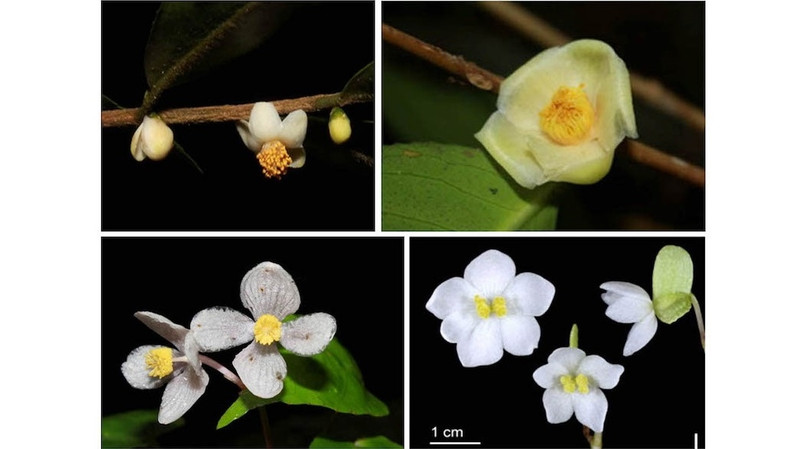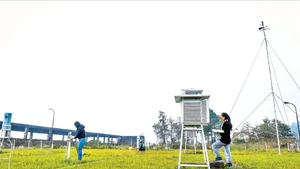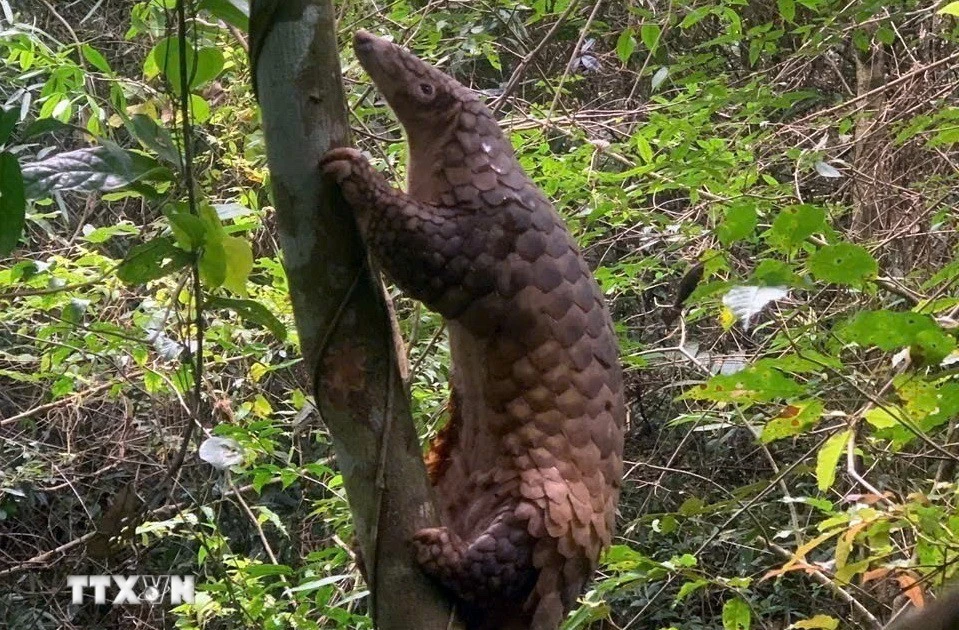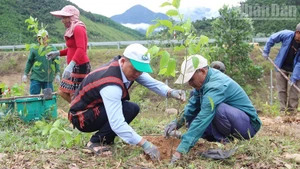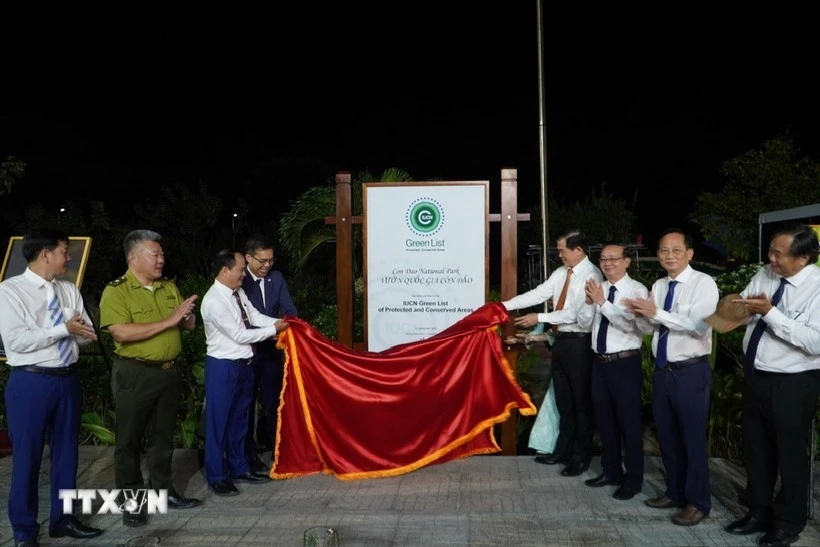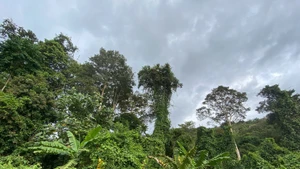On April 18, the national park’s director, Dr. Le Van Huong, announced that three famous international journals specialising in botany, including Brittonia, International Camellia Society and Phytotaxa, have announced four new plants sourced from this national park. Of which, two species belong to the Camellia genus and two others belong to the Begonia genus.
According to Dr. Huong, the new findings, published in prestigious international journals specialised in botanical science, are the pride of the scientific staff and their associates working in the park.
According to the announcement, the Camellia is the largest genus of the Tea family (Theaceae), with more than 300 species recorded globally. Vietnam and China are the two countries recording the highest distribution in the species of this genus. In recent years, there have been many new discoveries and announcements of species in this genus, which have significantly added to national and regional biodiversity.

The tra my Bidoup - Camellia bidoupensis (Photo: Bidoup - Nui Ba National Park)
The two new Camellia species were discovered at the Bidoup - Nui Ba National Park and announced in the early months of 2021, including the tiny camellia (Camellia flosculora Curry, VS Le, CQ Truong & VD Luong, sp.nov.) and Bidoup Camellia (Camellia bidoupensis, Truong, Luong & Tran, sp.nov.).
Camellia flosculora is a small to medium, evergreen tree, 3 to 8 metres high, with lanceolate oblong and hairy leaves. The tree blooms from September - October, is white, with a flower size of 0.5 to 0.7 cm. This is the smallest Camellia flower recorded in the world.

The tra hoa ty hon - Camellia flosculora (Photo: Bidoup - Nui Ba National Park)
Camellia bidoupensis is a small to medium tree, evergreen, from 3 to 7 metres high, with a grey-brown bark. The leaves are round or elliptical, 8 to 12cm long, 3.5 to 5.5cm wide, and quite thick. The tree flowers blossom in September - October, with the white-chicken-fat colour and a diameter of 2 to 2.5 cm. This species is named after its distribution site Bidoupensis, as an affirmation of the authors of its origin.
In Vietnam, the Camellia genus has been studied for a long time by prominent local authors, bringing the total number of species in this genus to more than 80 species by 2021.
Over 90 Begonia species were reported in Vietnam, with many having a narrow and endemic distribution. The latest two Begonia species found in the Bidoup - Nui Ba National Park are Hon Giao Begonia (Begonia hongiaoensis - CWLin, TCHsu & Luu, sp.nov.), named after a massif with a high biological density in the park, and Lam Dong Begonia (Begonia lamdongiana - CWLin, TCHsu & Luu, sp. nov.), also named after its origin in Lam Dong Province, where the species was first discovered and sampled.

The thu hai duong Hon Giao (Hon Giao begonia) - Begonia hongiaoensis (Photo: Bidoup - Nui Ba National Park).
“The above two species of begonia are the result of a cooperative project to survey plants in Langbiang Plateau, Vietnam between the Dr. Cecilia Koo Botanic Conservation Centre (Taiwan. China), and the Vietnam Southern Institute of Ecology and Bidoup - Nui Ba National Park,” according to Dr. Huong.
The Hon Giao Begonia is a herbaceous plant, 20-30 cm high, leaves not lobed or symmetrical, but oblong egg- to wide egg-shaped, with a long petiole. Its flowers appear in January to March every year, with white or pale pink petals, with yellow stamens emerging at the base of the flower.
The Lam Dong Begonia is also a herbaceous plant, 10 cm tall, with many feathers. Its fruit is hard, light green to cream pink, triangular in shape, measuring 5 to 10 mm long and 4 to 8 mm wide. Its leaves and petioles are small, light green to dark pink, 8.5-25 cm long, 2.2-3.5 mm thick, with the leaf blade asymmetrical, ovoid to lanceolate, 10-13.5 cm long and 5.5-7.5 cm wide. Its leaf base is a clearer heart-shape than the Hon Giao Begonia, with the underside of its leaves silver with many feathers. The flowers are unisex, with stalks measuring 12-23 mm long, white to pink, blooming in September to November every year.

The thu hai duong Lam Dong (Lam Dong Begonia) - Begonia lamdongiana (Photo: Phytotaxa Journal)
Dr. Huong said that a new plant species must undergo a rigorous and independent evaluation process by international scientists specialising in in-depth subjects on species and subspecies close to those newly discovered. From the initial research, scientists determine the survey area, collect, dissect, find differences, and compare it with hundreds of domestic and foreign samples and documents, then synthesise the results and send these to specialised journals, as well as answering questions from independent reviewers.
Expanding collaborative research and strengthening field surveys to fully assess the population level and conservation status of plants and focusing on rare species with a narrow natural distribution is essential in biodiversity conservation in the Bidoup - Nui Ba National Park. This information is the foundation for developing a conservation strategy suitable for each species or species group on the basis of existing resources.
The announcement of the four new species originating from the park once again affirms the very special biodiversity value of this area.
